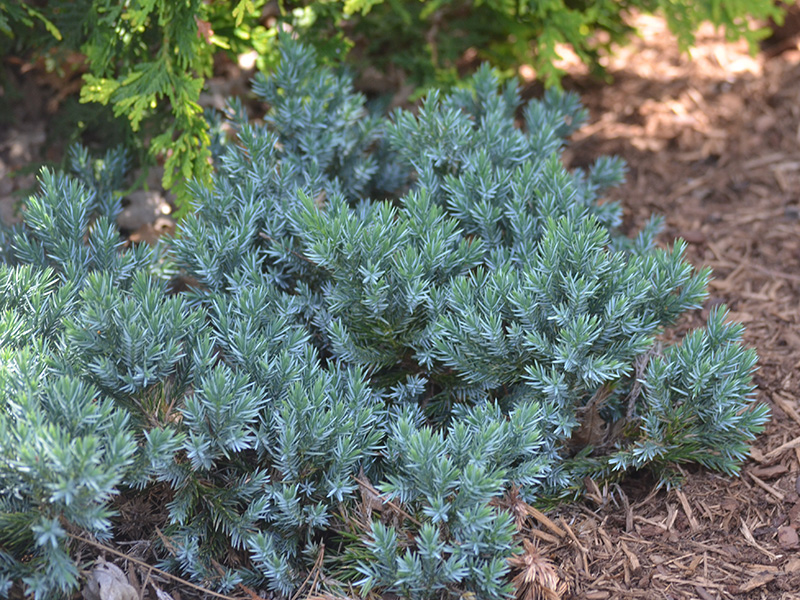
Woody > Juniperus > Juniperus squamata > Juniperus squamata 'Blue Star'
Juniperus squamata
'Blue Star'
Blue Star Single Seed Juniper
Origin: 'Blue Star' is a mutation of the Juniperus cultivar ‘Meyeri’, discovered in Holland and introduced into the market in 1964.
Mike's
Opinion


"
This is an award winning juniper with attractive, year-round blue foliage. The plant will not tolerate any standing water, heat or humidity but does tolerate deer, drought, pollution, rabbits, seashores, slopes and winds. Its life span is 30 years and grows up to 2 m. The rich foliage may decline in high humidity and in high night temperatures. Provides a striking contrast among other conifers.
Michael Pascoe, NDP., ODH., CLT., MSc. (Plant Conservation)
"
| Family |
| Cupressaceae |
| Genus |
| Juniperus |
| Species |
| squamata |
| Cultivar |
| 'Blue Star' |
| Category |
| Woody |
| Type |
| Shrub (evergreen) |
| Pronunciation |
| USDA Hardiness Zone |
| 4 - 8 |
| Canadian Hardiness Zone |
| 2a - 8a |
| RHS Hardiness Zone |
| H4 - H7 |
| Temperature (°C) |
| -35 - (-7) |
| Temperature (°F) |
| -30 - 20 |
| Height |
| 30 - 90 cm |
| Spread |
| 30 - 120 cm |
Photographs
Description and Growing Information
Flowering Period
| General Description |
| Juniperus squamata 'Blue Star' is a ground-covering juniper with shaggy, cinnamon bark and pretty blue, star-shaped needles. |
| Landscape |
| Can be grown as ground cover, over slopes and where runoff is a problem. Makes a striking contrast among other conifers. Can be trained to grow like a tree or rounded, squat shrub, small compact bush or along retaining walls. |
| Cultivation |
| Grow in full sun to part shade, in soil with a pH range of 5.5 - 8.5, containing mostly sand to clay loam. Fertilize yearly, avoiding the late growing season. Adaptable to both dry and moist growing conditions, mulch is recommended, AHS heat zone 1 - 5. |
| Shape |
| Bushy, low-mounded hemispherical. |
| Growth |
| Slow |
| ID Characteristic |
| Pale blue-green foliage, unique among the conifers. Needles form a star-shape. |
| Pests |
| Possible problems include: leaf miners, bark beetles, scale insects, aphids, mites, caterpillars, bagworms, phomopsis twig blight, gymosporangium rust, dieback, canker, lesion nematodes, brown felt blight, and heart and wood rots. |
| Habitat |
| Horticultural origin. |
| Bark/Stem Description |
| Exfoliating, shaggy cinnamon bark, moderately fissured. |
| Leaf Description |
| Needles are awl-shaped and silver blue, in whorls of 3 radially arranged around branches so that they look like stars. |
| Fruit Description |
| Black, insignificant ornamentally. Berry-like female cones containing a single seed. |
| Colour Description |
| Silver-blue. |
| Texture Description |
| Extremely fine, delicate and sharp. |
| Notable Specimens |
| The Gardens of Fanshawe College (Conifer Garden), London, Ontario, Canada. |
| Propagation |
| By ripe cuttings taken in late autumn through winter. Also by roots held in a humid cold frame or soft cuttings taken in the summer and placed over bottom heat and under a misting system. |
References
Micheal. A., Dirr. Manual of Woody Landscape Plants. Sixth Edition, Jan 30 2013.

